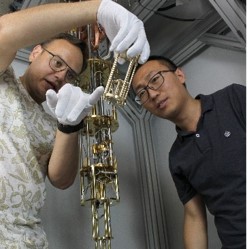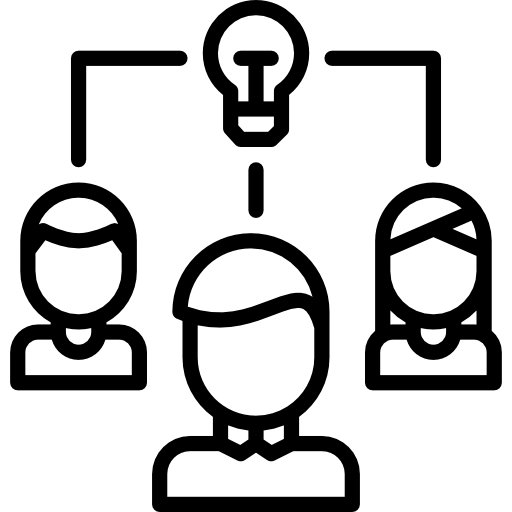ICFO decide game
Group 5 – Participant 2
Story cards
Read all the cards from this category, choose the one that looks more interesting to you and explain it to the rest of the group.
alina anderson
Story Card 12
A few weeks ago I got the job of my dreams: I’m working at a maker space, where I can tinker with all the machines they have. I love the flexible structures that can be obtained by cutting wood: without the precision of lasers, they wouldn’t be so easy to do! I’m also fascinated by the new 3D printer: thanks to its laser, we can quickly reproduce plastic parts that makers on the other side of the world have designed. It’s almost like the teleporters of science fiction movies!
photonics everywhere
blanca bueno
Story Card 13
I've loved cinema since I was a child, but I decided that would be my life when I saw my first 3D movie. The possibility of seeing the depth of the scenes on the screen seemed like magic to me. But, as is often the case in cinema, it’s just a special effect! The glasses with polarizing lenses that are given at the entrance, select different photons that come from the projectors, bringing to our eyes two slightly different images that our brain combines creating the feeling of three-dimensionality.
photonics everywhere
zahra zadeh
Story Card 18
Living in a mountain village with few shops, I usually buy everything I need online. However, there are many people in the village, including my grandmother, who would rather spend more than one hour in the car to the nearest city than leave their data on the internet, because they are afraid of cyberattacks.
Although this is a serious danger, I’m not worried, because I read that there are also many people who are studying new ways to improve the security of our communications, and it seems that the most promising techniques have to do with the exotic properties of quantum physics!
information and cybersecurity
info cards
Read all cards from this category, choose the two that look more interesting and explain them to the rest of the group.
graphene-based light sensors
Info Card 4
There are things our eyes cannot see. For example, infrared and ultraviolet radiation (which our eyes and conventional cameras cannot capture) carry information that can help us control the quality of food, monitor the health of our body, or see in adverse conditions (darkness, fog).
With the graphene-based sensors being developed at ICFO in collaboration with Qurv (an ICFO spin-off born in 2020), it would be possible to do all of these things and even more with small, low-cost detectors easily integrated into current electronic systems and wearable technologies.
Photo: Prototype of graphene-based wearable device to detect vital signs
health
informaTION and cybersecurity
transparent and flexible solar cells
Info Card 12
Sunlight is a free and inexhaustible source of energy that we must learn to use efficiently, especially in the current context of climate emergency.
At ICFO, several people are studying new materials to create transparent and/or flexible solar cells that would allow us to obtain energy from places that currently aren’t used for the generation of energy. For example, they could be integrated into electric cars to increase their autonomy or into the windows of buildings to maximize the surface area of sunlight capture and therefore energy production. They could also be integrated into clothing or wearable devices, reducing the size of batteries and therefore of the object.
Photo: The square of different color on the O of the ICFO logo is a transparent solar cell
energy and environment
graphene with a twist
Info Card 14
Graphene is a material of a single layer of atoms with incredible
properties: transparent, resistant, flexible and an optimal conductor of electricity and heat.
In 2018 it was discovered that two superimposed layers of graphene with a small rotation between them could transform this already interesting material in itself into a superconductor.
This was very important news for the scientific community and it even was published in the New York Times! It allows us to better understand the phenomena that take place in superconductors and potentially to design materials that conduct electricity without losses at room temperature, reducing the waste that takes place with current materials.
ICFO is one of the few laboratories in the world where it is possible to transform graphene into a superconductor.
Photo: Part of the ICFO team working on this project with the device that allows to observe the properties of graphene
photonics everywhere
understanding photosynthesis
Info Card 18
Some organisms can transform sunlight into the energy they need to live with photosynthesis. This process, resulting of millions of years of evolution, is incredibly efficient: they can transform 95% of the light that reaches them into energy. In contrast, the best solar commercial panels today translate only 20% of energy into electricity.
At ICFO, we use ultrafast laser pulses to "photograph" the molecules responsible for capturing light energy found in photosynthetic organisms in order to better understand this process and improve the efficiency of solar panels.
Photo: Experimental setup to study some of the relevant molecules for photosynthesis
energy and environment
thinking cards
Read all the cards from this category, choose the one that looks more interesting to you and explain it to the rest of the group.
diversity
Thinking Card 1
If we asked you to draw a scientist, how would you represent it? This experiment has been done many times and very often people imagine a middle-aged white man. This is due to the stereotypes that have been spread among society for centuries, but it is also true that there is a problem of representation of minorities in science (as there also is in many other sectors of society).
This is not only a matter of social justice: science would benefit greatly from more diversity because it is a creative and collaborative process. How can we successfully foster diversity in science?
the applications of fundamental sciences
Thinking Card 12
Many of the technologies that we use nowadays derived from a very different research field. For example, the internet was created at an international particle physics research centre, CERN; satellite positioning systems (GPS, Galileo) owe their precision to the theory of general relativity.
Sometimes, research fields that in principle have no obvious applications, generate useful technologies as side effects. Should we then invest in fundamental research for the potential benefits coming from its eventual byproducts? Or is the advancement of knowledge sufficient reason to put resources into it?
DECISIon
The time and resources available to solve important problems affecting society are limited. Imagine being part of the commission that has to decide how to invest the money for photonics research at European level for the coming years: knowing that photonics benefits society in many different ways, how would you distribute funds among the different research fields in photonics?
This is not an individual decision: each group must come to a unanimous conclusion by discussing correctly and rationally based on the facts that you have learned so far. There is no right or wrong answer. Like many things in life, it depends on the point of view you assume, the priorities you set, ...
light for health
Option 1
The pandemic that arose in 2020 taught us that public health is an important sector that affects many more aspects of society. A tiny virus can affect the lives of millions of people in all its aspects, not only health, but also the economy, industrial structure, labor market ...
That’s why it’s important to focus most of our efforts on research projects that can improve and care for people’s health.
light for information and cybersecurity
Option 2
We live in the information age. More and more companies and institutions are collecting and analyzing large amounts of data to improve industrial processes and services for the population. In addition, digital technologies are essential to communicate with each other, whether for work or fun. If information systems fail, strategic structures such as energy networks, traffic control, hospitals, governments, etc. fail, too. Thus, ensuring data security for quick and massive data transfer is of fundamental importance for a digitized society like ours.
That is why it is important to focus most of our efforts on research projects that can improve data collection, analysis, transmission and security.
light for energy and the environment
Option 3
We are in the middle of a climate emergency: to be able to solve it we need new environmental policies and the commitment of society as a whole. Science and technology can accelerate the change of paradigm that we need to save the planet with discoveries and innovative technologies. If we do nothing now, the Earth will be uninhabitable and unsustainable, but there’s still time.
That’s why it’s important to focus most of our efforts on research projects that can help us take care of our planet.
photonics everywhere
Option 4
Photonics is everywhere and has a positive impact in many different aspects of our lives. Sometimes, the same technology (such as the laser) can improve health, information and care for the environment at the same time. There are many global issues and it is difficult to set a priority, especially because they are interconnected.
That’s why it’s important not to focus our efforts on a single field of application: it’s better to diversify our efforts to have more chances of success.














